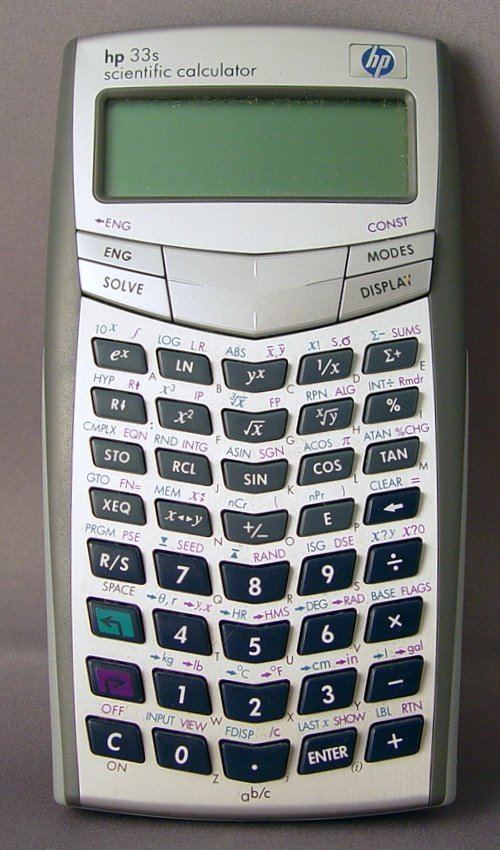Design firm Kinpo Electronics Entry mode RPN,Infix | Introduced 2003 Cost 40 USD | |
 | ||
Type | ||
The HP 33s (F2216A) was a scientific calculator marketed by Hewlett-Packard. It was introduced in 2003 as the successor to the HP 32SII, and discontinued on the introduction of its successor the HP 35s in 2007.
Contents
Features
Its main features are:
The main differences from the HP 32SII are:
The HP 33s was co-designed and manufactured by Kinpo Electronics of Taiwan.
Reception
The 33s is generally considered to have fewer logic bugs than the HP 35s. However, the unconventional chevron-styled keypad has been regarded by reviewers as bizarre and difficult to use compared to other HP professional calculators.
Revisions
The 33s went through numerous revisions that have solved two of the most pervasive issues people had with the early models (namely poor screen quality and bad keypad responsiveness).
